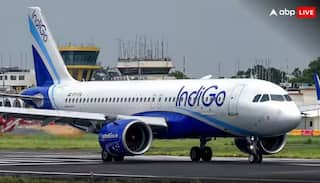Aditya-L1 Performs Second Earth-Bound Manoeuvre. Know When The Next Perigee Burn Will Occur
Aditya-L1: After the orbit-raising manoeuvre, Aditya-L1 has received an orbit of size 282 km x 40225 km.

Aditya-L1, India’s first space-based solar observatory to study the Sun, has successfully performed its second Earth-bound manoeuvre. The spacecraft performed this perigee burn at 2:45 am IST on September 5, 2023. The Indian Space Research Organisation (ISRO) Telemetry Tracking and Command Network’s (ISTRAC’s) ground stations at Mauritius, Bengaluru, and Port Blair tracked Aditya-L1 during this manoeuvre, ISRO said in a mission update. After the orbit-raising manoeuvre, Aditya-L1 has received an orbit of size 282 km x 40225 km.
According to ISRO, Aditya-L1 will perform the next Earth-bound manoeuvre on September 10, 2023, at around 2:30 pm IST.
Aditya-L1 Mission:
— ISRO (@isro) September 4, 2023
The second Earth-bound maneuvre (EBN#2) is performed successfully from ISTRAC, Bengaluru.
ISTRAC/ISRO's ground stations at Mauritius, Bengaluru and Port Blair tracked the satellite during this operation.
The new orbit attained is 282 km x 40225 km.
The next… pic.twitter.com/GFdqlbNmWg
Aditya-L1 performed its first Earth-bound manoeuvre on September 3, 2023, at around 11:40 am IST, and reached an orbit of 245 km x 22459 km.
MUST READ | Science For Everyone: Why It Is Important To Study The Sun, And How Aditya-L1 Will Do So
After each Earth-bound manoeuvre, Aditya-L1’s orbit is becoming more and more elliptical.
Two more Earth-bound manoeuvres remain. After this, Aditya-L1 will exit Earth’s gravitational sphere of influence and enter the cruise phase. This stage will help Aditya-L1 head towards its final destination, which is a halo orbit around Lagrange point 1 (L1).
This is a strategic location because not only will it allow Aditya-L1 to save its fuel, but also have an uninterrupted view of the Sun for the entirety of its mission life.
Aditya-L1 is equipped with seven payloads, four of which are remote sensing instruments, and three are in-situ payloads.
The remote sensing payloads will serve as spectrometers. Meanwhile, two of the in-situ payloads will act as particle analysers, while one will be a magnetometer.
Aditya-L1’s mission objectives include studying the solar corona, understanding the dynamics of coronal mass ejections, analysing the high-energy particles emitted by the Sun, and determining how solar activities impact space weather in real time. The spacecraft will also study the photosphere and the chromosphere, which are the innermost and the middle layers of the Sun’s atmosphere, respectively.
ISRO launched Aditya-L1 on September 2, 2023, at 11:50 am IST, atop a PSLV-XL rocket, from Satish Dhawan Space Centre, Sriharikota. It will take Aditya-L1 about four months to reach its destination.





































